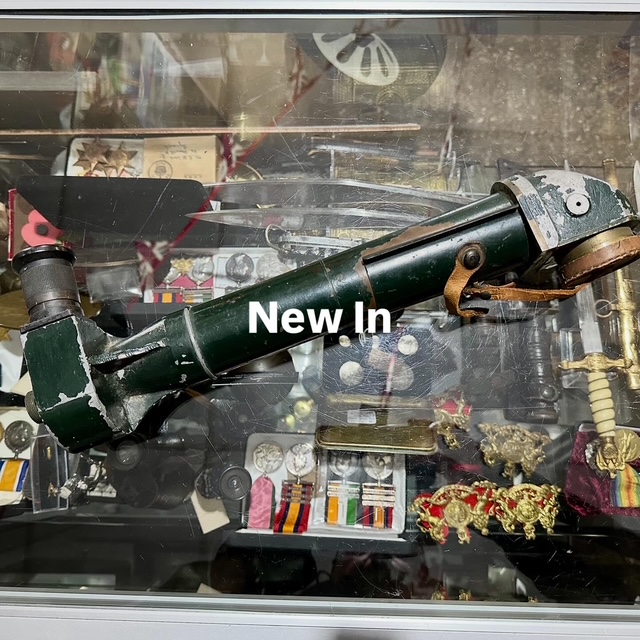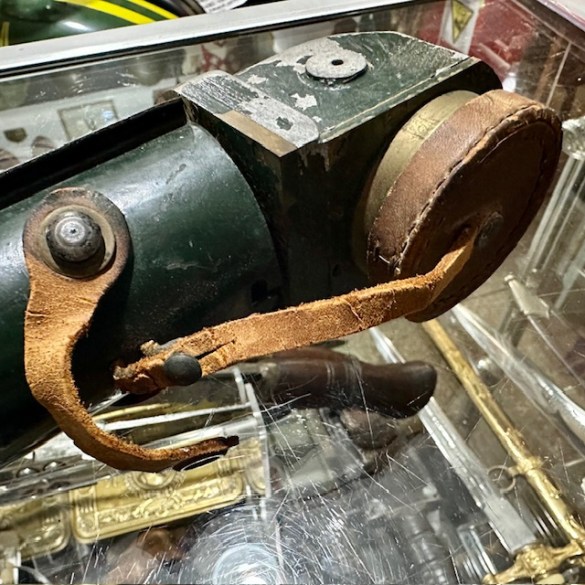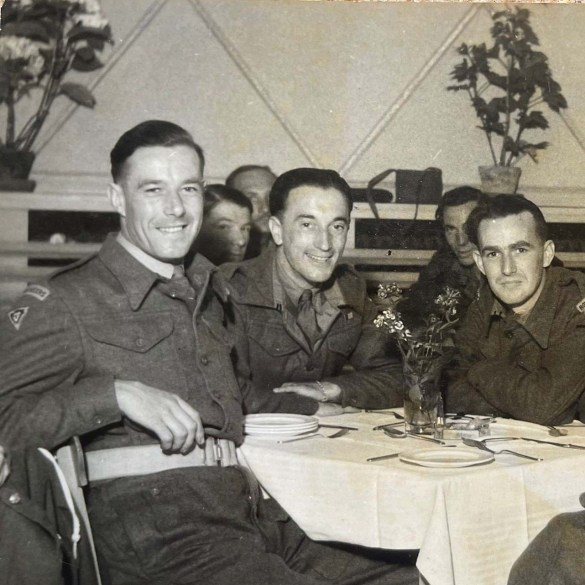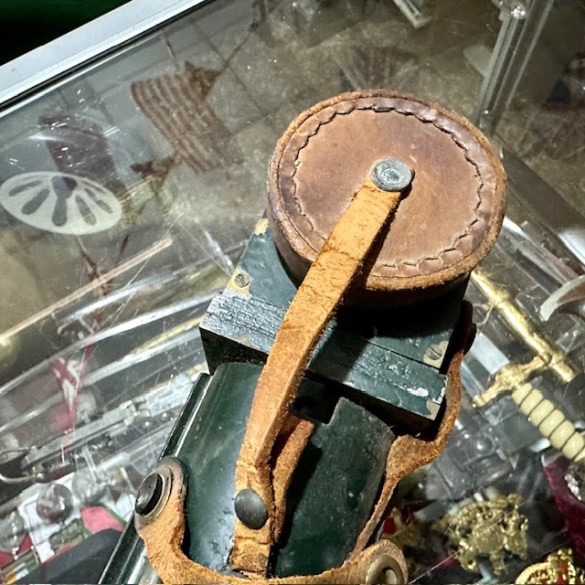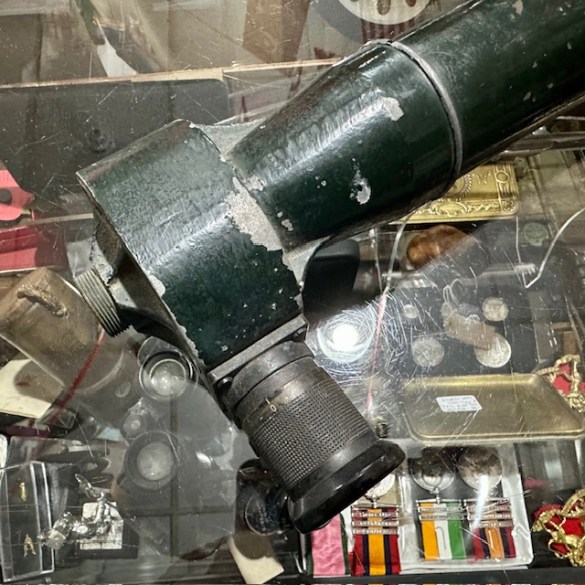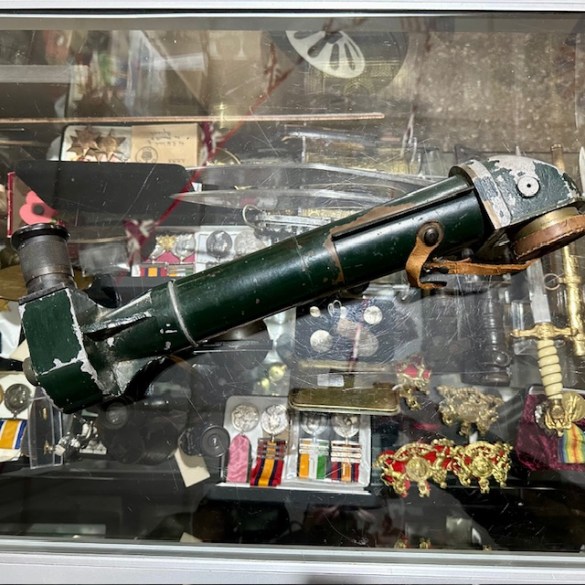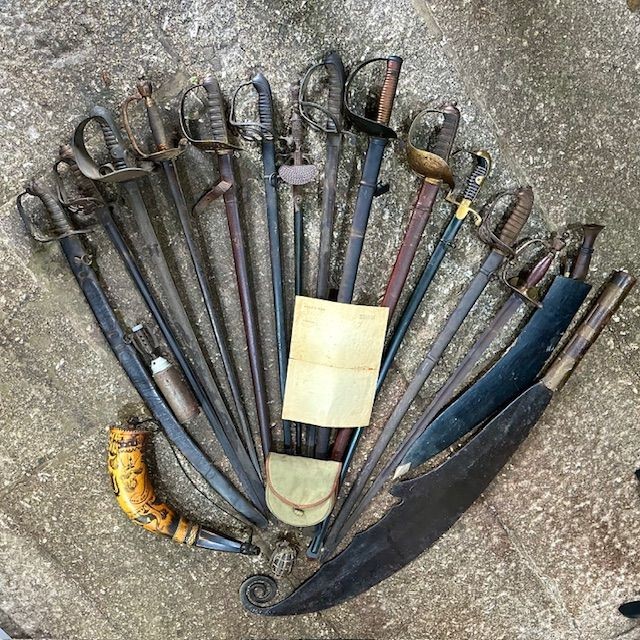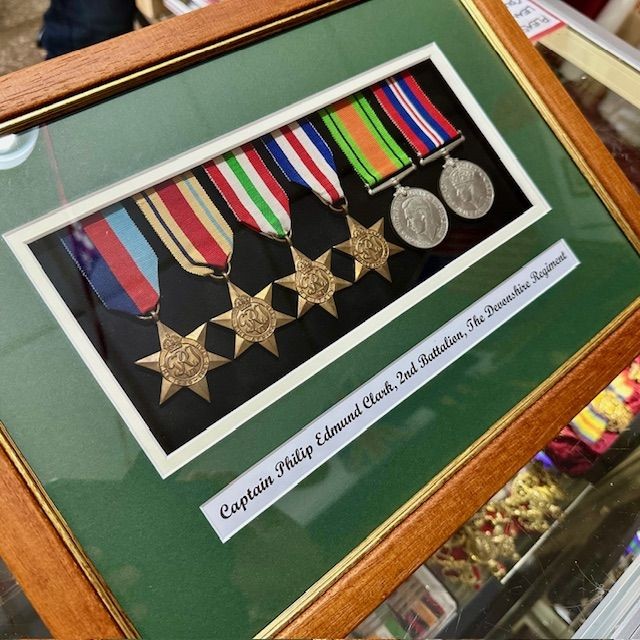Ref: XXX - WW2 Churchill Tank Scope Maker Marked and Dated with Provenance.
WW2 Churchill Tank Scope Maker Marked and Dated with Provenance.
Veterans Name: Francis (Frank) William Rogers (Armoured Vehicle Royal Engineers (A.V.R.E))
Born: 1917
Died: 1993
A rare and very interesting item purchased directly from the family of the veteran.
Armoured Vehicle Royal Engineers (A.V.R.E)
Our man is sitting 1st left on the main tank picture and this picture was taken in Eindhoven in December 1944.
The members of the crew socialising was taken at the Montgomery Club in Brussels.
Hobart's Funnies
The disastrous Dieppe Raid of August 19th, 1942, forced a great deal of reevaluating as to how combat engineers would operate on the battlefield. A Canadian Officer of the Royal Canadian Engineers, John James Denovan, began work on developing an armored vehicle that would allow them to carry out their objectives, but remain protected. Denovan worked at the Special Devices Branch of the Department of Tank Design (DTD) in England alongside the Assistant Director of the Branch, Lieutenant Colonel George Reeves. Reeves had been an observer at the Raid on Dieppe, and noted just how difficult it was for engineers to clear the anti-tank obstacles on the beach under heavy fire, which kept the attacking tanks pinned down on the beach. The Lieutenant Colonel decided to base this new armoured vehicle on the Churchill Infantry Tank. With this idea, the 'Armoured Vehicle Royal Engineers', or 'A.V.R.E.' was born.
The Churchill Tank
Officially designated as 'Tank, Infantry, Mk.IV, A.22', the Churchill entered service with the British Armoured Forces in 1941. It was named, contrary to popular belief, after an ancestor of the famous Winston Churchill, not the man himself. It was the last 'Infantry Tank' to serve in the British Military. Churchills were well armoured. The thickness of the armour would increase with subsequent models of the tank. At its thickest, Churchill Mk.I had 102mm (4.in) of armour. This increased to an impressive 152mm (6in) with the Mk.VII.
The Churchill went through a number of upgrades to its main armament throughout its service. Churchill Mk.I and IIs were armed with a 2-Pounder (40mm) gun, the Mk.III and IVs were armed with a 6-Pounder (57mm) gun and the Mk.VI and VIIs were armed with a 75mm (2.95in) gun. The Mk.V and VIIIs were designed as Close Support (CS) tanks, so they were exclusively armed with a 95mm (3.7mm) Howitzer. The Churchill was not fast. A lumbering beast at approximately 40-tons, its top speed was only 15 mph (24 km/h). It was powered by a Bedford 12-cylinder engine producing 350 hp. The tank was supported on a complicated suspension with 11 small wheels per side, each one attached to an independent coil spring. The drive wheel was at the rear with a sprocketed idler at the front. Though it was slow and heavy, the Churchill made a name for itself as being one of the best cross-country tanks ever built and could climb higher gradients or cross harder obstacles impassible to most other tanks then in service. The Churchill served for the remainder of the Second World War, and even saw action in the Korean War. The Infantry Tank version of the Churchill was officially removed from service in 1952.
YouTube video to follow!

